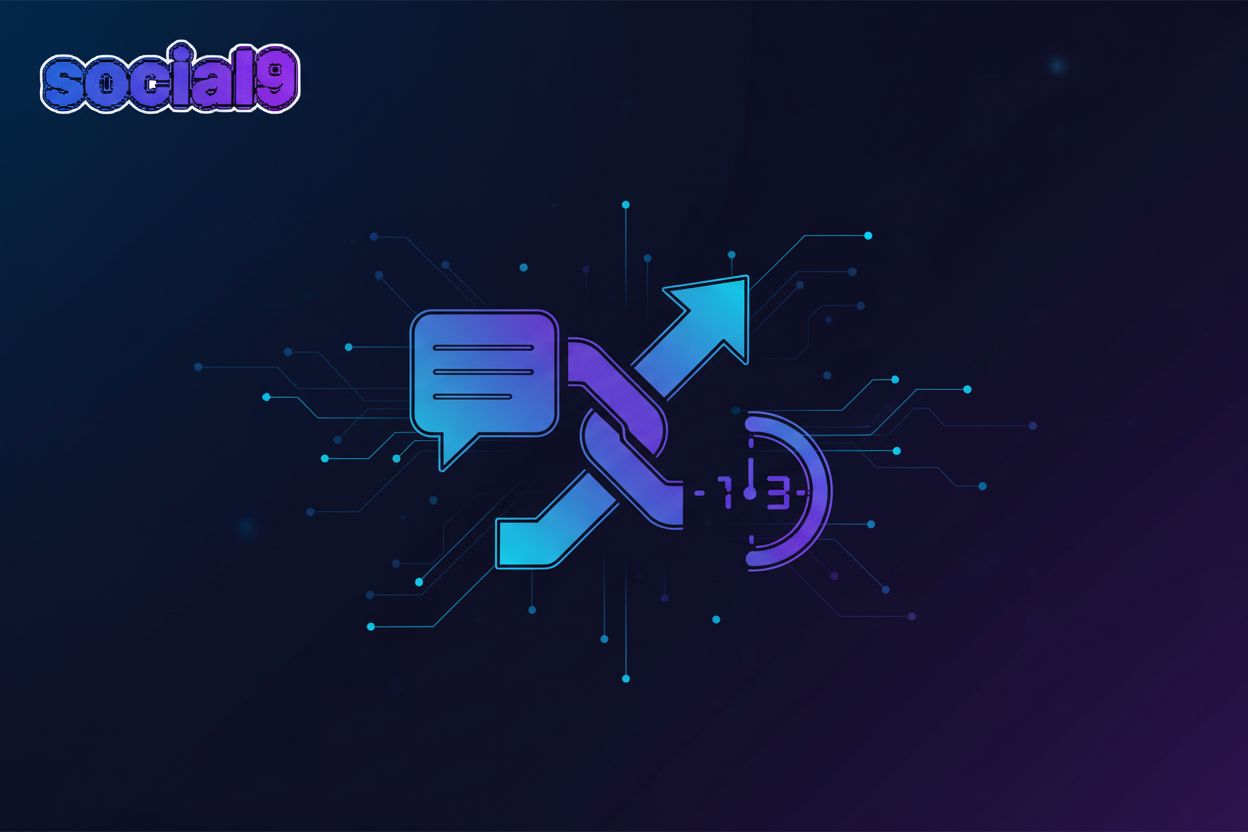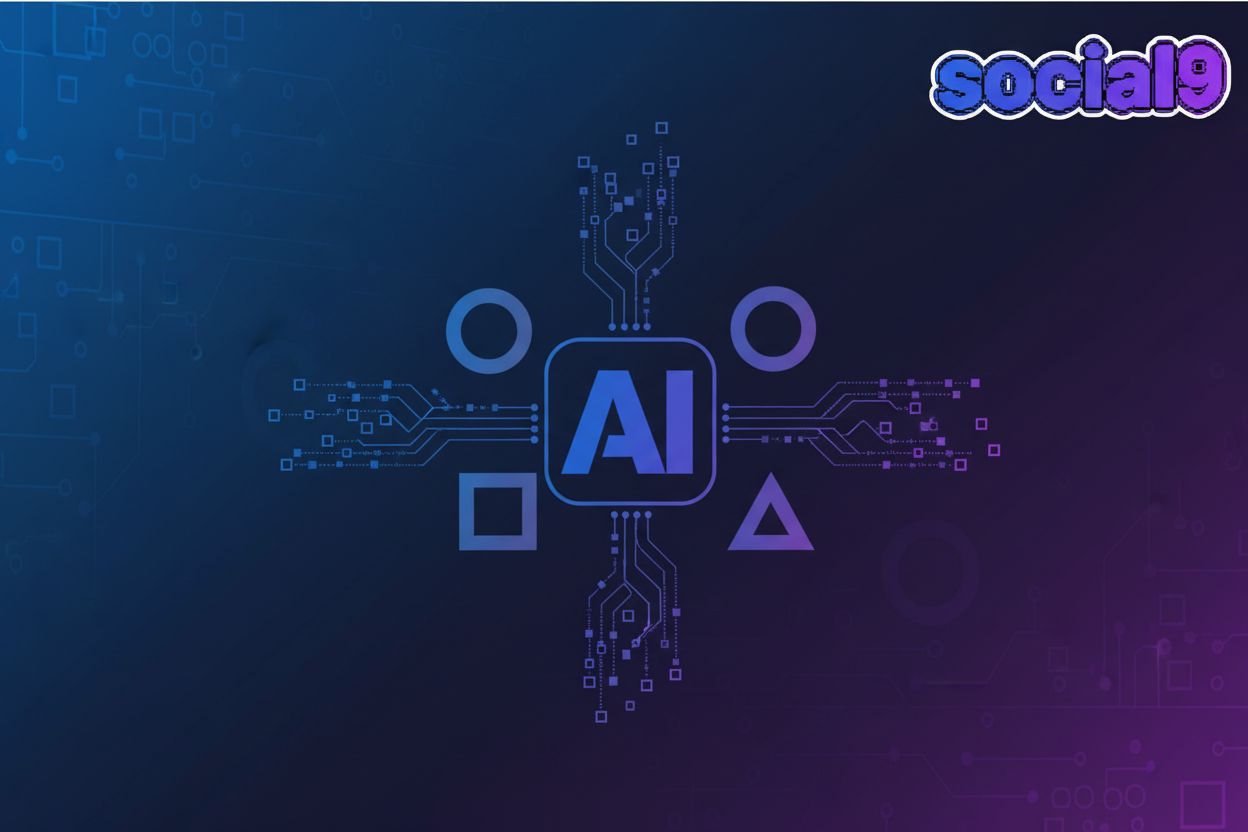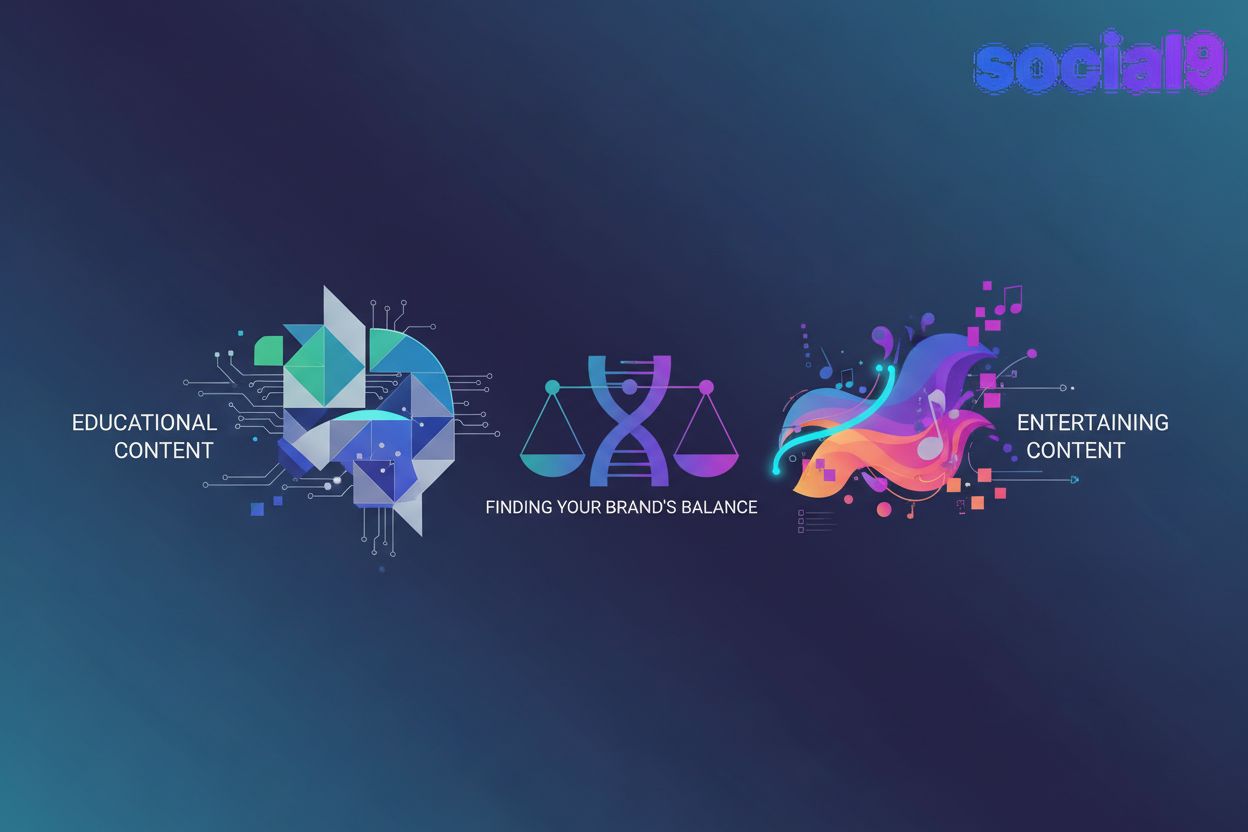AI-Driven Influencer Identification: A Content Creator's Guide
The Evolving Landscape of Influencer Marketing
The influencer marketing landscape is rapidly changing. Are you ready to navigate the ai-driven transformation?
Traditional methods of influencer identification are notoriously time-consuming. Content creators often find themselves lost in a sea of profiles, manually sifting through data to find the right fit. Ai offers a solution by automating much of this process, including data collection, initial screening, and pattern recognition.
Ai algorithms can analyze vast datasets to identify patterns and insights that might be missed manually. These tools consider factors such as engagement rates, audience demographics, and content performance. As inBeat Agency notes, nearly half of influencer marketing strategies now incorporate ai to enhance efficiency and targeting.
Brands are increasingly recognizing the value of micro and nano-influencers. These influencers often have smaller, more dedicated audiences, leading to higher engagement rates. Ai helps brands identify micro-influencers who align with specific brand values and target demographics.
Micro-influencers offer a more targeted approach to reaching niche audiences. With ai, brands can analyze data to find influencers with the most relevant followers. This level of precision ensures that marketing efforts are directed towards the most receptive audience segments.
Consumers are seeking genuine recommendations and are wary of traditional advertisements. Authenticity is now a key factor for consumers when choosing the influencers to follow. The use of ai should consider the ethical implications and transparency when using automation.
As Influencer Marketing Hub points out, many marketers are concerned that ai-powered influencers present a lack of authenticity. (How AI is Transforming Influencer Marketing) In fact, their July 2024 Influencer Marketing Report found that 36.7% of marketers are concerned that ai-powered influencers present a lack of authenticity.
As we move forward, balancing ai's capabilities with the need for genuine connections will be crucial. The future of influencer marketing lies in finding the right blend of technology and human touch. This sets the stage for a deeper dive into the mechanisms of ai in influencer identification.
How AI Revolutionizes Influencer Identification
Ai is transforming how content creators identify the right influencers. By automating data analysis and offering deeper insights, ai streamlines the selection process, saving time and resources.
Ai algorithms excel at analyzing vast datasets. They identify patterns and insights that would be nearly impossible to detect manually. This capability ensures a more precise and effective influencer selection process.
Ai tools consider various factors to determine the best influencer fit. These include engagement rates, audience demographics, and content performance. By analyzing this data, brands can identify influencers whose audience aligns with their target market.
Understanding Influencer Reputation and Authenticity
Compatibility matching assesses the alignment between a brand's style and values with the influencer's content. Advanced ai systems analyze content themes, visual aesthetics, and tone of voice. This ensures partnerships appear natural and coherent to consumers.
Sentiment analysis is a crucial tool for gauging public perception. It examines comments and interactions on an influencer's social media posts. This provides insights into how positively or negatively an influencer is viewed by their audience. Ai provides a nuanced understanding of audience sentiment, going beyond simple positive or negative classifications.
Ensuring authenticity and trust is paramount. Ai plays a critical role in identifying potential fraud by analyzing patterns that may indicate fake followers, engagement, or deceptive practices. This helps content creators ensure they are partnering with authentic influencers. Audience verification scrutinizes an influencer's follower base for irregularities. Ai tools look for sudden spikes in followers or disproportionately high engagement rates from suspicious accounts. This process helps verify the legitimacy of an influencer's audience. Cross-platform consistency checks verify audience and engagement metrics across multiple social platforms. Discrepancies in follower demographics across platforms can raise red flags. This ensures that the influencer's audience is consistent and authentic across all their channels.
Ai's ability to quickly analyze data and identify fraudulent activity is invaluable. It helps content creators make informed decisions, ensuring that their influencer marketing campaigns are based on genuine engagement.
By using these ai-driven methods, content creators can refine their influencer identification process. This leads to more effective and authentic collaborations.
Next, we'll explore how ai helps content creators personalize their campaigns.
Leveraging AI Tools for Influencer Discovery
Ai tools have revolutionized influencer marketing, but how do content creators leverage them for influencer discovery? Let's dive into some practical applications.
Social9 aims to streamline the influencer identification process using ai-powered tools. This can save content creators significant time and resources.
- Ai-Powered Generation: Social9 enhances content creation with ai-powered generation. This feature helps content creators rapidly develop engaging content tailored to different platforms.
- Smart Captions and Hashtag Suggestions: Social9 offers intelligent caption writing and hashtag suggestions. These features help optimize content for better reach and engagement.
- Content Templates: The platform provides a variety of content templates. These templates help content creators maintain a consistent brand voice and aesthetic.
- 24/7 Support: Social9 offers round-the-clock support to assist content creators. This ensures content creators can leverage ai effectively for influencer marketing.
Sprout Social offers unique affinity-based searches for influencers. This approach helps content creators find influencers who genuinely align with their brand.
- Lookalike Profiles: Sprout Social helps identify lookalike profiles based on affinity. This means the platform seeks out influencers with similar content and audiences.
- Topic Similarity: The platform's algorithm identifies profiles talking about the same topics. This ensures relevance and alignment between brands and influencers.
- Audience and Category Filters: Content creators can refine affinity results using filters. These filters include audience size and profile category, allowing for precise targeting.
Modash provides in-depth analytics to help content creators find the right influencers. Understanding an influencer's audience is crucial for a successful collaboration.
- Follower Interests: Modash breaks down the various interests of an influencer’s followers. This allows you to target influencers who can reach specific audience segments.
- Audience Segmentation: This capability allows you to zero in on influencers who can reach specific audience segments. This enhances the precision of your influencer marketing efforts.
- Hashtag and Mention Analysis: The platform analyzes the influencer's most used hashtags and mentions. This provides insights into the influencer's content focus and audience interests.
By leveraging these ai tools, content creators can significantly improve their influencer discovery process. They can also ensure more effective and authentic collaborations.
Next, we'll explore how ai tools assist content creators in campaign personalization.
Crafting Targeted Campaigns with AI Insights
Ai insights are revolutionizing how content creators tailor influencer campaigns, leading to more effective and resonant marketing strategies. By leveraging these advanced tools, brands can achieve a deeper understanding of their audience and optimize content for maximum impact.
Ai-powered tools extract demographic information to identify specific groups within an audience. This includes classifying them based on attributes such as age, location, and cultural interests. This detailed segmentation allows content creators to tailor messaging to resonate with specific audience segments, increasing campaign relevance and appeal. For example, a fitness brand can use ai to identify influencers popular among young adults in urban areas, ensuring the campaign resonates with that specific demographic.
Ai also enables a thorough exploration of an audience's psychological and sociological aspects. By analyzing data from social media and browsing behavior, ai identifies personality traits, values, and lifestyles. This allows brands to understand what drives their audience on a deeper level.
Ai tools analyze user behaviors across web platforms to identify engagement patterns. This includes preferred content types and key interaction points. This data helps tailor campaigns to match user habits and preferences. For instance, ai can reveal whether an audience prefers video content over written posts, or if they are more likely to engage with interactive elements like polls and quizzes. This level of insight allows content creators to optimize their strategies for better engagement and conversion rates.
Ai tools assist in extracting key quotes and sentiments from customer reviews and discussions about a brand. These insights reveal what customers love or what areas need improvement, helping tailor content to address these points. This ensures that marketing messages align more effectively with each segment to boost engagement and conversion rates.
Ai-powered tools also assist in generating content quickly and efficiently. This saves content creators time and ensures consistency across all content channels. By automating content creation, content creators can focus on refining the message and ensuring it resonates with their audience.
Ai helps optimize content for search engines by analyzing keyword performance. This ensures content ranks higher on search engines and attracts more organic traffic. This helps brands increase their online visibility and reach a wider audience.
By understanding these audience dynamics, content creators can develop more effective strategies. This leads to more meaningful connections with their target audience.
Next, we'll explore how ai is reshaping content creation itself.
The Ethical Considerations of AI in Influencer Marketing
Ai's ability to pinpoint the perfect influencers is undeniable, but what about the ethical compass guiding this technology? As content creators increasingly rely on ai for influencer marketing, it's crucial to address the ethical considerations that arise.
Ai can blur the distinction between authentic human influencers and automated personas. It's essential to ensure transparency so consumers understand when they're interacting with ai-driven content.
- Authenticity vs. Automation: Ai-driven influencers can sometimes feel less genuine. Brands need to be upfront about ai's role to avoid misleading audiences.
- Ethical Guidelines: Ethical guidelines should outline the responsible use of ai in marketing. This includes clear disclosures and avoiding deceptive practices.
- Maintaining Trust: Transparency helps maintain consumer trust. When audiences know ai is involved, they can better assess the content's credibility.
Ai systems often require access to large volumes of personal data to function effectively. This raises significant concerns about data privacy and security.
- Data Collection: Ai tools collect data to analyze influencer performance and audience demographics. It's vital to handle this data responsibly to protect user privacy.
- Privacy Regulations: Adhere to strict privacy regulations, such as GDPR. These laws ensure that personal data is protected and used ethically.
- User Awareness: Consumers should be informed about how their data is being used. Clear privacy policies and consent mechanisms are essential.
Ai algorithms can perpetuate biases if not carefully designed and monitored. This can lead to unfair or discriminatory outcomes in influencer selection.
- Algorithmic Bias: Ai algorithms can reflect the biases of their creators or the data they're trained on. It's important to mitigate these biases to ensure fairness.
- Fairness and Inclusivity: Ensure fairness and inclusivity in ai-driven influencer selection. Avoid using criteria that could discriminate against certain groups.
- Regular Audits: Regularly audit ai systems to identify and mitigate potential biases. This helps maintain ethical standards and promote diversity.
Balancing the benefits of ai with these ethical considerations is crucial for sustainable influencer marketing. As ai continues to evolve, content creators must prioritize transparency, data privacy, and fairness to maintain consumer trust.
Next, we'll explore how ai is reshaping content creation itself.
The Future of AI-Driven Influencer Identification
The future of ai-driven influencer identification is here, promising even more sophisticated and streamlined approaches. Are you ready to peek into the crystal ball and see what's next?
Ai-powered predictive analytics is set to revolutionize influencer marketing. These tools forecast future performance trends based on current data. This helps content creators anticipate shifts in audience preferences and market dynamics.
By analyzing historical campaign data, engagement metrics, and content performance, ai algorithms can predict which influencers are likely to perform well in the future. This allows you to adjust campaign strategies, content, and influencer collaborations beforehand to maximize their impact.
- For example, a fashion brand could use predictive analytics to identify rising influencers. These influencers create content about sustainable fashion, aligning with a growing consumer interest in eco-friendly products.
- A healthcare company might forecast the impact of partnering with an influencer. This influencer is known for promoting mental health awareness. This helps them optimize their messaging for maximum reach and engagement.
Virtual influencers are digital personas created using computer-generated imagery (CGI) and artificial intelligence. They are designed to interact with audiences on social media platforms. These ai-driven personalities offer unique opportunities for brands seeking greater control and consistency.
Unlike real people, virtual influencers are fully controlled by their creators. This allows you to manage every aspect of their appearance, behavior, and messaging. This level of control can be particularly appealing for brands in highly regulated industries.
- A financial services company might create a virtual influencer to educate young adults about investing. They can control the messaging and ensure compliance with regulations.
- A retail brand could use a virtual influencer to showcase their latest products. They can tailor the influencer's style and content to align perfectly with their brand image.
Many brands are now experimenting with hybrid influencer models. This means combining human influencers with ai-powered tools. This approach can create a dynamic campaign where the strengths of both types are used.
This hybrid approach engages different audience segments and amplifies the overall reach and effectiveness of your marketing efforts. It also allows content creators to maintain a sense of authenticity while still leveraging ai for efficiency and data-driven insights.
- For instance, a beauty brand might partner with a human influencer. They will create authentic content showcasing their personal experiences with the products. At the same time, they can use ai to optimize the influencer's content for maximum reach and engagement.
- An educational platform could use a human influencer to share their personal learning journey. They can also leverage ai to personalize the learning experience for each individual user.
As ai continues to evolve, these hybrid models are likely to become more prevalent. They'll offer content creators the best of both worlds.
This blend of human creativity and ai efficiency sets the stage for our final exploration: how ai is reshaping content creation itself.
Best Practices for Content Creators
The journey through ai-driven influencer identification has been transformative, hasn't it? But what are the best practices to ensure content creators like yourself stay ahead in this dynamic field?
Social media trends and algorithms are constantly changing. To stay competitive, content creators should stay informed about the latest developments in ai and influencer marketing.
- Keep an eye on industry publications, attend webinars, and participate in relevant online communities. For example, follow reputable marketing blogs like Social Media Today or MarketingProfs, and join LinkedIn groups focused on influencer marketing.
- Regularly audit your strategies to identify what's working and what's not. Use analytics tools to track your campaign performance and audience engagement.
- Adapt your approach based on the latest insights and data. Don't be afraid to experiment with new platforms or content formats.
While ai can streamline many processes, authenticity and genuine engagement are still key. Focus on building meaningful relationships with your audience.
- Craft content that resonates with their interests and values. Understand your audience's pain points and aspirations.
- Encourage interaction through questions, polls, and discussions. Respond to comments and messages promptly.
- Be transparent about sponsored content and partnerships. Always disclose when content is paid for.
The field of ai and influencer marketing is constantly evolving. To stay ahead of the curve and maximize your potential, content creators should invest in continuous learning and skill development.
- Take online courses, attend workshops, and read industry blogs. Look for courses on platforms like Coursera or Udemy that focus on digital marketing and ai.
- Experiment with new ai tools and techniques. Try out different ai writing assistants or content optimization tools.
- Share your knowledge and experiences with others. Participate in online forums or create your own content to share your learnings.
As you navigate the future of ai-driven influencer marketing, remember that continuous adaptation, authenticity, and lifelong learning are your greatest assets. Embrace these best practices to thrive in this exciting landscape!





